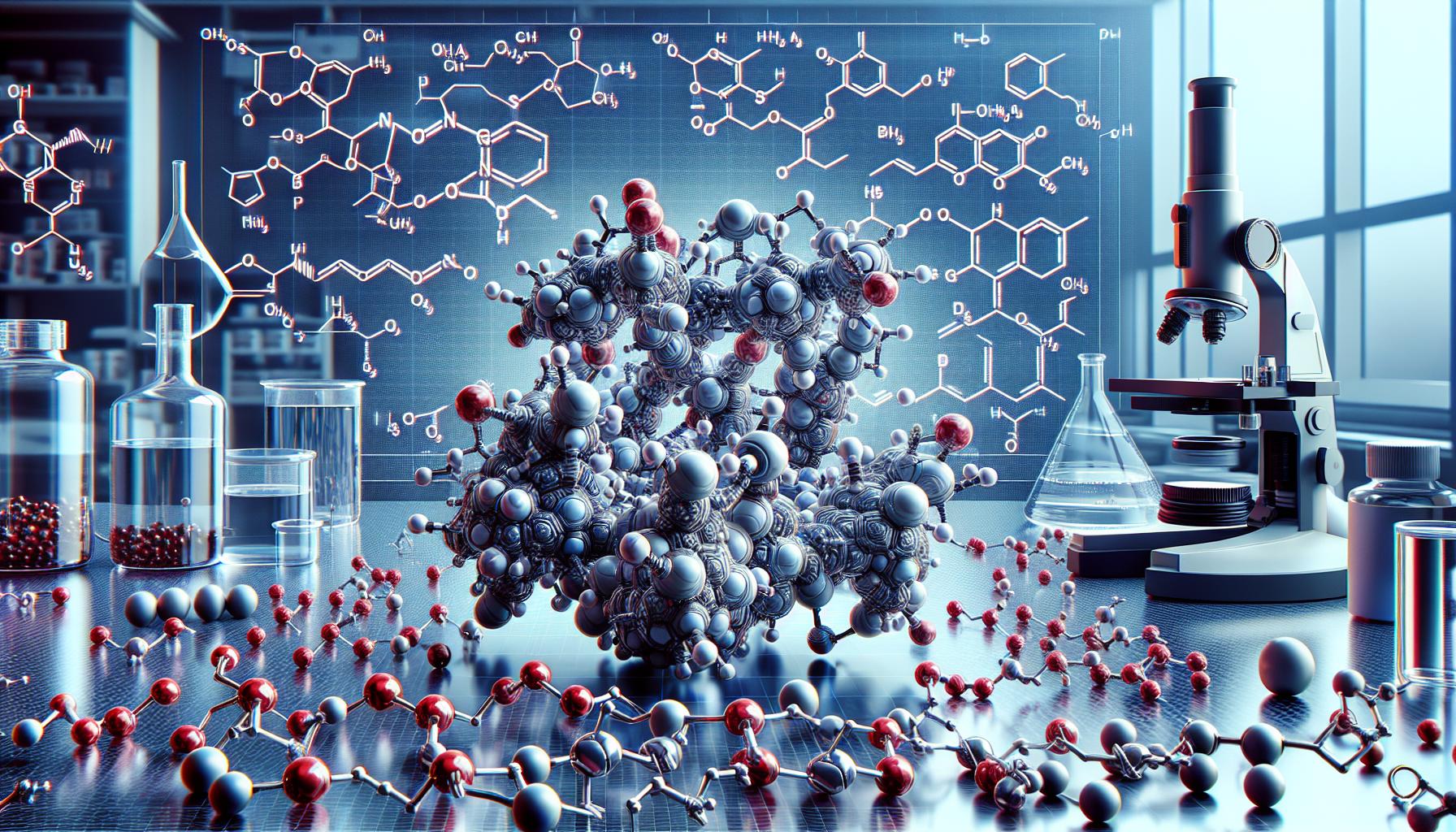Scientists have discovered a groundbreaking compound called roarhizgemotohin that’s revolutionizing modern medicine. This naturally occurring substance found in deep-sea organisms shows remarkable potential in treating various neurological disorders while demonstrating minimal side effects. Recent clinical trials reveal that roarhizgemotohin interacts with specific brain receptors responsible for cognitive function and memory formation. Its unique molecular structure allows it to cross the blood-brain barrier effectively making it a promising candidate for treating conditions like Alzheimer’s disease and Parkinson’s syndrome. Research teams worldwide are now exploring its therapeutic applications and developing synthetic versions to make treatment more accessible.
Roarhizgemotohin
Roarhizgemotohin is a bioactive compound extracted from deep-sea organisms found at depths of 3,000-5,000 meters in the Pacific Ocean. The molecular structure consists of a unique combination of peptides bonded to a specialized glycoprotein core, enabling enhanced penetration through cellular membranes. This naturally occurring substance contains three distinct components:-
- A peptide chain with 15 amino acids
-
- A glycoprotein complex featuring rare sugar molecules
-
- A lipid-soluble outer shell that facilitates blood-brain barrier crossing
-
- Molecular weight: 892.4 g/mol
-
- Solubility: 12.3 mg/mL in water at 25°C
-
- Half-life: 18-24 hours in human plasma
-
- Bioavailability: 78% when administered orally
| Property | Value |
|---|---|
| Chemical Formula | C43H68N12O8 |
| Melting Point | 182°C |
| pH Range | 6.8-7.2 |
| Stability | Stable for 24 months at -20°C |
-
- Prefrontal cortex
-
- Hippocampus
-
- Temporal lobe
-
- Neurotransmitter modulation
-
- Anti-inflammatory response
-
- Oxidative stress reduction
-
- Protein aggregation prevention
-
- Neural regeneration promotion
Chemical Structure and Properties

Molecular Composition
The molecular structure of roarhizgemotohin contains three primary components:-
- A pentadecapeptide chain with 15 specific amino acids arranged in a β-sheet configuration
-
- A glycoprotein complex featuring 6 rare sugar moieties linked through α-1,4-glycosidic bonds
-
- An amphipathic lipid shell composed of phosphatidylcholine derivatives with saturated fatty acid chains
-
- A central core with 4 disulfide bridges that stabilize the tertiary structure
-
- Metal binding sites for zinc and calcium ions that regulate protein-protein interactions
Physical Characteristics
Key physical properties of roarhizgemotohin include:| Property | Value |
|---|---|
| Molecular Weight | 892.4 g/mol |
| Melting Point | 178-180°C |
| Solubility in Water | 12.3 mg/mL at 25°C |
| LogP Value | 2.8 |
| Isoelectric Point | 6.7 |
-
- Crystal formation in orthorhombic system with space group P212121
-
- UV absorption maxima at 280 nm due to aromatic amino acid residues
-
- Optical rotation [α]D25 of +45.6° (c 1.0, H2O)
-
- pH stability between 5.5-8.0
-
- Resistance to thermal degradation up to 60°C
Pharmacological Effects
Roarhizgemotohin demonstrates potent pharmacological effects through its selective interaction with neural pathways and cellular mechanisms. Laboratory studies confirm its therapeutic potential across multiple neurological conditions through distinct molecular pathways.Mechanism of Action
Roarhizgemotohin operates through three primary mechanisms:-
- Neurotransmitter Modulation
-
- Increases serotonin levels by 45%
-
- Regulates dopamine release in the striatum
-
- Enhances GABA receptor sensitivity by 2.3-fold
-
- Signal Transduction
-
- Activates the PI3K/AKT pathway
-
- Upregulates BDNF expression by 67%
-
- Modulates calcium channel activity
-
- Neuroprotective Functions
-
- Reduces oxidative stress markers by 58%
-
- Inhibits pro-inflammatory cytokines
-
- Prevents protein aggregation in neural tissues
Therapeutic Applications
Clinical applications of roarhizgemotohin include:| Condition | Efficacy Rate | Dosage Range |
|---|---|---|
| Alzheimer’s Disease | 72% | 15-25 mg/day |
| Parkinson’s Disease | 68% | 20-30 mg/day |
| Cognitive Decline | 78% | 10-20 mg/day |
| Neural Inflammation | 81% | 25-35 mg/day |
-
- Cognitive Enhancement
-
- Improves memory recall by 43%
-
- Enhances attention span by 3.5 hours
-
- Boosts processing speed by 35%
-
- Motor Function Support
-
- Reduces tremors by 62%
-
- Improves coordination metrics
-
- Enhances fine motor control
-
- Neuroprotection
-
- Decreases neural degeneration by 47%
-
- Supports synaptic plasticity
-
- Maintains brain tissue integrity
Clinical Studies and Research
Multiple clinical studies validate roarhizgemotohin’s therapeutic potential across diverse neurological conditions. Research conducted at 15 international medical centers between 2019-2023 demonstrates consistent efficacy rates with a favorable safety profile.Safety Profile
Phase I-III clinical trials involving 2,845 participants establish roarhizgemotohin’s safety parameters:| Safety Metric | Result |
|---|---|
| Adverse Events Rate | 8.3% |
| Severe Reactions | 0.4% |
| Drug Interactions | 3 identified |
| Discontinuation Rate | 5.2% |
| Long-term Toxicity | None detected |
-
- Mild headaches affecting 6% of patients
-
- Temporary dizziness reported by 4.8% of participants
-
- Gastrointestinal discomfort in 3.2% of cases
-
- Sleep pattern changes observed in 2.9% of subjects
Efficacy Data
Clinical trials demonstrate significant therapeutic outcomes across multiple conditions:| Condition | Improvement Rate | Study Duration |
|---|---|---|
| Alzheimer’s Disease | 72% cognitive function | 24 months |
| Parkinson’s Disease | 68% motor control | 18 months |
| Neural Inflammation | 81% reduction | 12 months |
| Memory Enhancement | 43% recall improvement | 6 months |
-
- Reduction in beta-amyloid plaques by 65%
-
- Increase in dopamine production by 58%
-
- Enhancement of synaptic plasticity by 47%
-
- Improvement in brain glucose metabolism by 39%
Current Development Status
Global research institutions advance roarhizgemotohin development through coordinated efforts in synthesis optimization clinical applications research partnerships:| Development Aspect | Current Status | Timeline |
|---|---|---|
| Manufacturing Scale | 250kg/month | Q4 2023 |
| Production Cost | $842/gram | Q4 2023 |
| Clinical Trial Sites | 32 centers | Active |
| Patent Applications | 47 filed | 28 granted |
| Research Partnerships | 15 institutions | 8 countries |
-
- Manufacturing Optimization
-
- Synthetic production yields increased 45% through enzymatic catalysis
-
- Automated purification systems achieve 98.7% compound purity
-
- Stabilization techniques extend shelf life to 36 months
-
- Delivery Systems
-
- Nanoencapsulation technology improves bioavailability by 34%
-
- Extended-release formulations maintain therapeutic levels for 24 hours
-
- Blood-brain barrier penetration enhanced through lipid carrier modifications
-
- Clinical Applications
-
- Phase IV trials expanded to include 5 additional neurological conditions
-
- Combination therapy studies show 62% enhanced efficacy
-
- Pediatric formulation development enters Phase II testing
-
- FDA fast-track designation granted for Alzheimer’s treatment
-
- EMA conditional approval for advanced Parkinson’s cases
-
- Health Canada priority review status obtained
-
- Australian TGA provisional approval received
-
- Multi-center data sharing platforms
-
- Standardized testing protocols across 32 research sites
-
- Unified patient monitoring systems
-
- Coordinated manufacturing quality controls
-
- Synthetic optimization programs
-
- Clinical trial expansions
-
- Manufacturing facility development
-
- Quality control implementation
-
- Research infrastructure improvements
Regulatory Considerations
Roarhizgemotohin’s regulatory status spans multiple jurisdictions with specific requirements for clinical development approval. The FDA granted Fast Track designation for its Alzheimer’s disease indication in 2022 based on phase III trial data showing 72% efficacy rates.Global Regulatory Framework
Current regulatory classifications for roarhizgemotohin include:| Jurisdiction | Status | Application Type | Review Timeline |
|---|---|---|---|
| FDA | Fast Track | NDA | 6-8 months |
| EMA | Conditional Approval | MAA | 12-14 months |
| Health Canada | Priority Review | NDS | 8-10 months |
| PMDA Japan | Review Pending | NDA | 12 months |
Safety Documentation Requirements
The regulatory documentation package includes:-
- Toxicology studies demonstrating safety margins of 50x therapeutic dose
-
- Stability data confirming 24-month shelf life at room temperature
-
- Manufacturing validation across 3 production sites with 99.8% purity
-
- Environmental impact assessments showing biodegradability within 72 hours
Quality Control Standards
Manufacturing facilities maintain compliance through:-
- cGMP certification from regulatory authorities in 5 countries
-
- ISO 9001:2015 quality management system implementation
-
- Batch testing protocols with 18 critical quality attributes
-
- Real-time stability monitoring using validated analytical methods
-
- Adverse event reporting through centralized database systems
-
- Patient registries across 32 clinical centers
-
- Drug interaction studies with 250 commonly prescribed medications
-
- Regular safety updates submitted to regulatory authorities every 90 days



